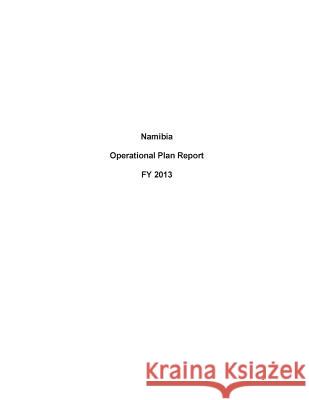Namibia Operational Plan Report FY 2013 » książka
Namibia Operational Plan Report FY 2013
ISBN-13: 9781503194243 / Angielski / Miękka / 2014 / 272 str.
Namibia is one of Africa's largest, yet least densely populated nations. With an estimated population of 2.1 million and a land-mass slightly more than half the size of Alaska (825,400 sq.km.), Namibia's people are distributed unevenly in urban centers and rural communities across enormous distances with a population density of 2.8 people/sq.km. Namibia's projected population growth rate remains at 1.87%, and the Government of the Republic of Namibia (GRN) anticipates continued growth in demand for health and social services through the current 30 year planning cycle.(1) In 2010, nearly 60% of the population was under the age of 24, 2/3 of whom were estimated to be under the age of 18.(2) Based on Gross National Income/per capita, the World Bank (WB) has classified Namibia as an Upper Middle Income Economy.(3) However, substantial income inequalities exist-Namibia's Gini coefficient ranks among the highest in the world.(4) Current estimates suggest that up to 28.7% of Namibians live in poverty.(5) Chronically high unemployment-34% in the formal sector, according to recent IMF estimates-is an important contributing factor to elevated rates of poverty.(6) Namibia depends on revenues from the common South African Customs Union pool for approximately 30% of its budget (the percentage varies from year to year) and could be hard hit by a revision of the formula used to distribute these revenues. In addition, the economy is heavily dependent on fluctuating mineral prices, with revenues from uranium and diamonds comprising 8% of the budget. Mining, fishing, agriculture, and tourism are expected to remain the pillars of the economy for the next decade. According to recent visits from International Monetary Fund and WB teams, Namibia's outlook for the next 1 to 3 years is stable. However, both institutions have urged caution given the expansionary budgets the GRN has adopted over the last two years.











